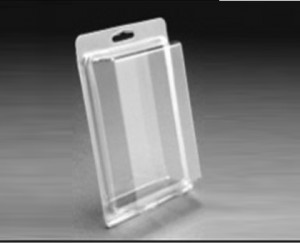Thomas Jake Lunsford is credited with inventing the clamshell, although he called it a “Separable Packaging and Display System” when he filed for a patent on September 15, 1976. Clamshells look a bit like their namesake as they are made from two identical plastic “shells” that fit around the product and hinge on one side. When the sides are pressed together, snaps form a seal, some of them harder to unfasten than others.
Lunsford made no mention of using a heat seal on the edges to make clamshells impossible to open without tools. Scissors, even when they aren’t trapped in a clamshell, don’t work well on tough, slippery plastic. And, like boxcutters, they pose some risk of hand injury. Tin snips work better, but there is a tool whose only purpose is to open clamshells.
To help his 90-year-old mother open sealed clamshells, retired dentist Steve Fisher invented the battery-powered Zip-it Opener 10 years ago. It’s very popular with seniors, people with arthritis and others with diminished hand strength, Fisher said in an interview.
Clamshell packaging remains popular with retailers because the product is visible on both sides, it can be hung or freestanding, and it’s harder to shoplift since the package is bigger than the product inside. It’s much lighter than cardboard or other alternatives—saving energy during transport—cheaper to make, and more durable. The food industry accounts for more than 60 percent of all clamshell packaging.
“There’s a huge variety of clamshell and blister packaging, “ says Sara Greasley, who runs a popular blog about packaging and works in the industry.
Blister packs are usually a clear bubble of plastic mounted on a piece of cardboard. Batteries are still sold this way. But the terms are often used interchangeably, so it can be confusing, Greasley said. The type of clamshell packaging used is usually driven by the retailers, particularly volume buyers like the club stores (i.e. Costco) who have specific packaging requirements, she said. For example packaging may have to withstand shaking, crushing, and dropping tests to ensure there’s no damage.
FROM:National Geographic Partners
